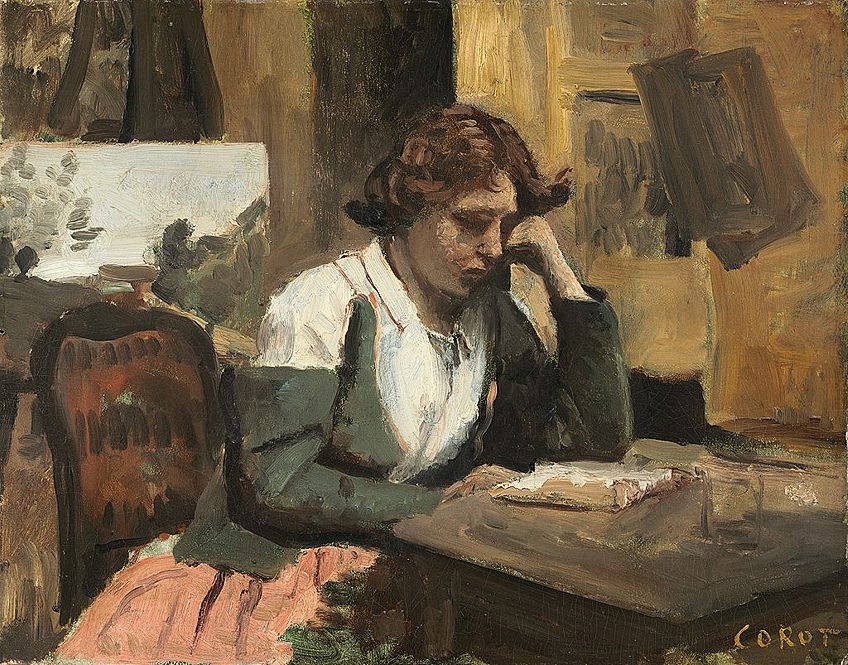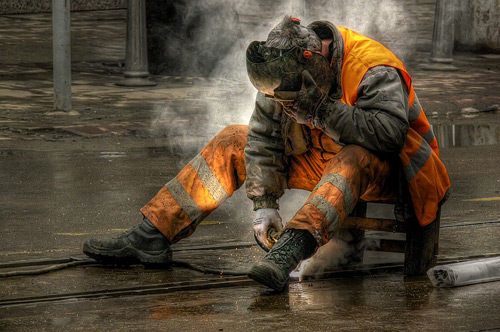1. Realism in Art
Kitchen sink realism is a style of art that emerged in the 1950s in Britain and is characterized by its unflinching portrayal of working-class life. It is a form of realism that focuses on the harsh realities of everyday life and presents them in a raw and unfiltered way. It is a rejection of the idealized and romanticized depictions of life that were prevalent in art at the time. Instead, kitchen sink realism sought to capture the grit and truth of working-class existence.
2. Kitchen Sink Drama
Kitchen sink drama is a term that is often used interchangeably with kitchen sink realism. It refers to a type of play or film that is set in a working-class environment and explores the struggles and challenges faced by the characters within that setting. The term "kitchen sink" comes from the idea that these stories take place in the most mundane and ordinary of settings, such as a kitchen or a living room, where the characters' true emotions and struggles are laid bare.
3. British New Wave Cinema
Kitchen sink realism was most prominent in British cinema during the 1950s and 1960s, during a period known as the "British New Wave." This movement was a response to the more traditional and escapist films that were popular at the time and aimed to bring a sense of authenticity and social commentary to the screen. Kitchen sink dramas were a significant part of this movement and were seen as a reflection of the changing social and political landscape of post-war Britain.
4. Working Class Characters
One of the defining characteristics of kitchen sink realism is its focus on characters from the working class. These are individuals who are often struggling to make ends meet and facing the harsh realities of poverty and class divide. Unlike the upper-class characters that were prevalent in art at the time, kitchen sink dramas gave a voice to the working class and their struggles, which had been largely ignored in mainstream media.
5. Everyday Life
Another key aspect of kitchen sink realism is its depiction of everyday life. These stories are not about extraordinary events or larger-than-life characters, but rather about the mundane and ordinary moments that make up our daily lives. It is through this lens of the ordinary that kitchen sink dramas are able to capture the complexities and struggles of the working class in a more authentic and relatable way.
6. Domestic Settings
As the name suggests, kitchen sink dramas often take place in domestic settings, such as kitchens, living rooms, and bedrooms. These are intimate spaces where the characters' true emotions and struggles can come to the forefront. By focusing on these domestic spaces, kitchen sink dramas are able to show the impact of social and economic issues on the everyday lives of ordinary people.
7. Authentic Dialogue
Kitchen sink dramas are known for their use of authentic dialogue, which adds to the overall realism of the stories. The characters speak in a natural and unfiltered manner, using colloquial language and slang that is true to their working-class backgrounds. This use of authentic dialogue allows the audience to connect with the characters and their struggles on a deeper level.
8. Social Commentary
One of the main purposes of kitchen sink realism is to provide social commentary on the issues facing the working class. These stories often touch on topics such as poverty, class divide, and the struggles of everyday life. They aim to shed light on the harsh realities of these issues and spark conversations about them in society.
9. Harsh Realities
Kitchen sink dramas are not afraid to show the harsh realities of life for the working class. They tackle difficult and uncomfortable topics such as domestic violence, unemployment, and poverty. These stories do not shy away from the harsh truths of these issues and instead present them in a raw and unfiltered manner.
10. Ordinary People
Lastly, kitchen sink dramas are known for their focus on ordinary people. These are not stories about the wealthy or famous, but rather about everyday individuals who are struggling to get by. By centering their stories around ordinary people, kitchen sink realism highlights the struggles and challenges faced by the working class and gives a voice to those who are often overlooked in society.
Kitchen Sink Realism Characteristics: Exploring the Artistic Movement

The Evolution of Kitchen Sink Realism
 Kitchen Sink Realism is a term used to describe a form of art that emerged in the 1950s and 1960s in Britain. It was a reaction to the highly stylized and romanticized art that had dominated the art world for centuries. The movement was a direct response to the social and political landscape of post-war Britain. The term "kitchen sink" itself comes from the idea that this type of art depicted ordinary, everyday life, including the mundane and gritty aspects that were often overlooked in traditional art.
Kitchen Sink Realism is a term used to describe a form of art that emerged in the 1950s and 1960s in Britain. It was a reaction to the highly stylized and romanticized art that had dominated the art world for centuries. The movement was a direct response to the social and political landscape of post-war Britain. The term "kitchen sink" itself comes from the idea that this type of art depicted ordinary, everyday life, including the mundane and gritty aspects that were often overlooked in traditional art.
The Main Characteristics of Kitchen Sink Realism
 Kitchen Sink Realism is often associated with the working-class and the urban poor, and it aimed to portray their struggles and realities in a raw and unfiltered manner. This form of art rejected formalism and instead focused on capturing the essence of everyday life. Some of the main characteristics of Kitchen Sink Realism include:
1. Realism:
As the name suggests, this artistic movement is grounded in realism. The artists aimed to depict real-life situations and experiences, often challenging the idealized versions of reality that were portrayed in traditional art.
2. Ordinary Subjects:
Kitchen Sink Realism often depicted ordinary people and their everyday lives, including the mundane and gritty aspects that were often ignored in traditional art. The subjects were often working-class individuals, and the settings were typically urban, reflecting the social and economic realities of post-war Britain.
3. Gritty and Raw:
Kitchen Sink Realism was characterized by its raw and unfiltered depiction of everyday life. The artists did not shy away from portraying the harsh and often unpleasant realities of post-war Britain, such as poverty, unemployment, and class struggles.
4. Social Commentary:
One of the main aims of Kitchen Sink Realism was to make a social commentary on the issues and struggles faced by the working-class and the urban poor. The art was often used as a means to shed light on the inequalities and injustices prevalent in society.
Kitchen Sink Realism is often associated with the working-class and the urban poor, and it aimed to portray their struggles and realities in a raw and unfiltered manner. This form of art rejected formalism and instead focused on capturing the essence of everyday life. Some of the main characteristics of Kitchen Sink Realism include:
1. Realism:
As the name suggests, this artistic movement is grounded in realism. The artists aimed to depict real-life situations and experiences, often challenging the idealized versions of reality that were portrayed in traditional art.
2. Ordinary Subjects:
Kitchen Sink Realism often depicted ordinary people and their everyday lives, including the mundane and gritty aspects that were often ignored in traditional art. The subjects were often working-class individuals, and the settings were typically urban, reflecting the social and economic realities of post-war Britain.
3. Gritty and Raw:
Kitchen Sink Realism was characterized by its raw and unfiltered depiction of everyday life. The artists did not shy away from portraying the harsh and often unpleasant realities of post-war Britain, such as poverty, unemployment, and class struggles.
4. Social Commentary:
One of the main aims of Kitchen Sink Realism was to make a social commentary on the issues and struggles faced by the working-class and the urban poor. The art was often used as a means to shed light on the inequalities and injustices prevalent in society.
The Impact of Kitchen Sink Realism
 Kitchen Sink Realism was a significant departure from traditional art and had a significant impact on the art world. It challenged the established norms and forced people to confront the harsh realities of post-war Britain. The movement also paved the way for other forms of socially and politically engaged art, such as pop art and conceptual art.
In conclusion, Kitchen Sink Realism was a groundbreaking artistic movement that aimed to capture the grit and rawness of everyday life in post-war Britain. With its focus on realism, ordinary subjects, and social commentary, it challenged the traditional notions of art and opened the doors for more socially and politically engaged forms of art.
Kitchen Sink Realism was a significant departure from traditional art and had a significant impact on the art world. It challenged the established norms and forced people to confront the harsh realities of post-war Britain. The movement also paved the way for other forms of socially and politically engaged art, such as pop art and conceptual art.
In conclusion, Kitchen Sink Realism was a groundbreaking artistic movement that aimed to capture the grit and rawness of everyday life in post-war Britain. With its focus on realism, ordinary subjects, and social commentary, it challenged the traditional notions of art and opened the doors for more socially and politically engaged forms of art.



















































































































